Life on the country
A sustainable life in Holmsvattnet
Sara and Robin Sjöstedt dreamed of a farm they could make their own. And in Holmsvattnet they found what they were looking for. With a ceaselessly sustainable mindset, the couple has a long-term plan to achieve total self-sufficiency. “The goal is for both of us to reduce our working hours and spend more time in our forest and on our land instead. And we can do that here,” explains Robin.
When their eldest daughter Saga was born, their apartment on Getberget in central Skellefteå started getting a bit crowded and Sara and Robin began looking for a bigger home. She dreamed of a horse farm, and he dreamed of having a forest. Everything within half an hour of town was of interest. They went to a good number of viewings, but when they got to the hilly farm in Holmsvattnet, about 30 km south of central Skellefteå, things just “clicked”.
“The moment I stepped out of the car, I froze. It was so quiet. That’s when I immediately felt we had to take a closer look at this one,” says Sara.
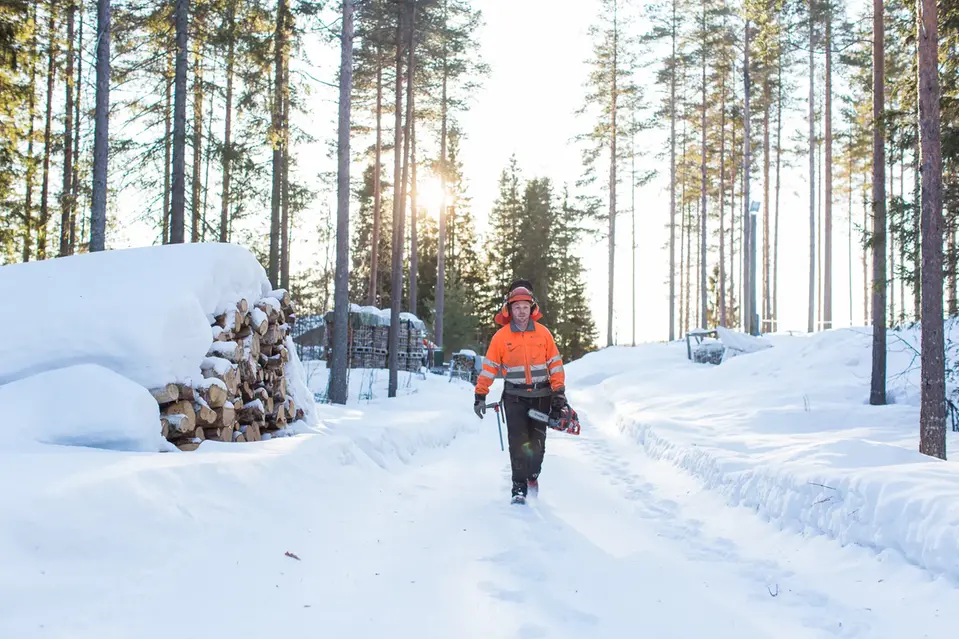
Robin fell for the location and the 46-hectare forest that together with the farm forms the parcel of property.
“The house, the barn and the machine room were not what we had in mind, but everything can be redesigned as we wish. Everything can be fixed,” says Robin.
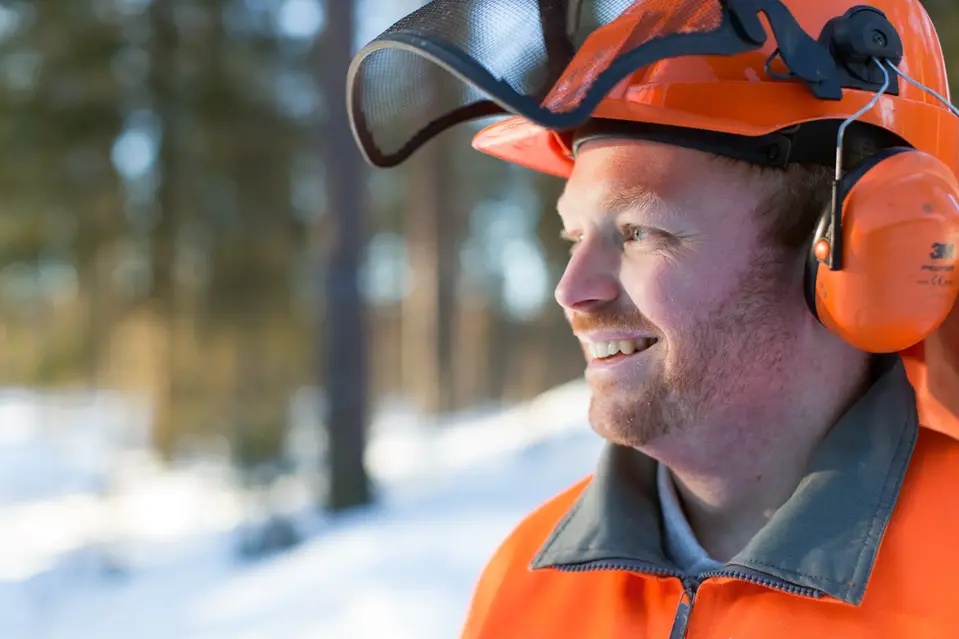
The village of Holmsvattnet has 17 year-round residences and around 50 houses that are used as summer homes. The previous owner of Sara and Robin’s house had one clear demand of the buyers – they had to live there. Robin and Sara responded that they had every intention of doing so, and the parties reached an agreement.
“Other speculators had made higher bids, but they were going to use the house as a summer cottage, so we got the price down quite a bit just because we wanted to live here and develop the farm. Our idea has always been to find a farm that we can shape over a long period of time,” says Sara.
The family was welcomed to Holmsvattnet with open arms. Some neighbors came by with flowers and others stopped to say hello. To get properly acquainted with everyone in the village, Sara and Robin jumped at the opportunity to host one of Holmsvattnet’s monthly meetings, where the villagers gather to talk about practical things that affect them all.
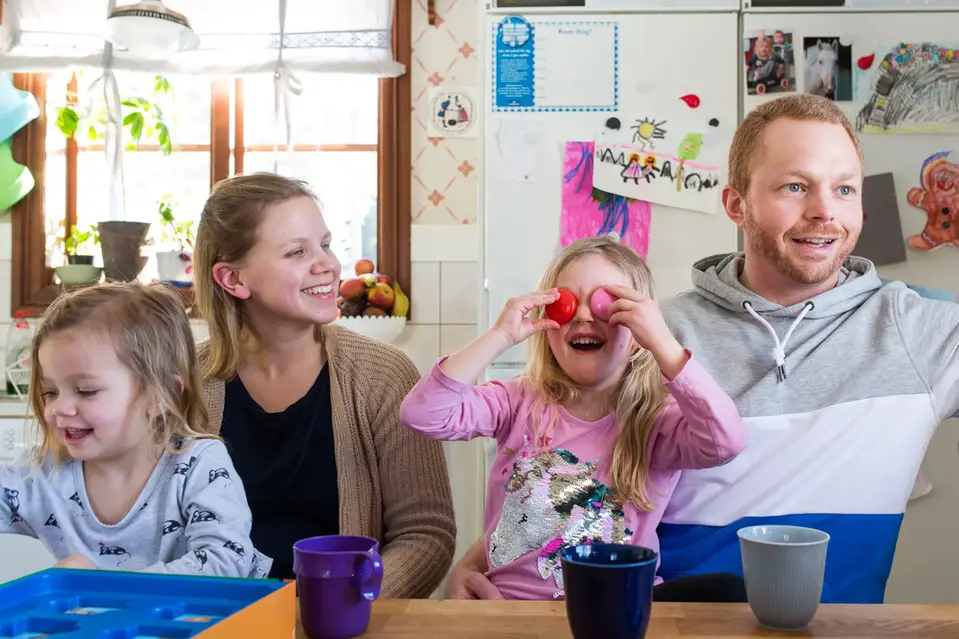
“We have several projects where we join forces and make joint procurements, which is best for everyone. This summer the village’s fiber network will be up and running, and some people need help extending it out to their islands. Then it will be the whole village’s responsibility to try to make that happen, and a weekend job where everyone helps each other,” says Robin.
Is it obvious to everyone that this is how things should be done?
“ Yes. There are 17 permanent households in the village, and everyone wants the others to stay.”
A blue tractor rolls down the driveway and stops in front of the barn. It’s Per Marklund, who has dropped by to say hello.
“He has an incredible memory and has stories about all sorts of things. Sometimes he stays so long that you have to tell him to go home,” Robin says with a laugh.
Half an hour later, Per turns the key in his tractor’s ignition. He lowers the plow into the road and turns on the snowblower. A giant cloud of snow gusts out over the meadow outside Sara and Robin’s kitchen window.
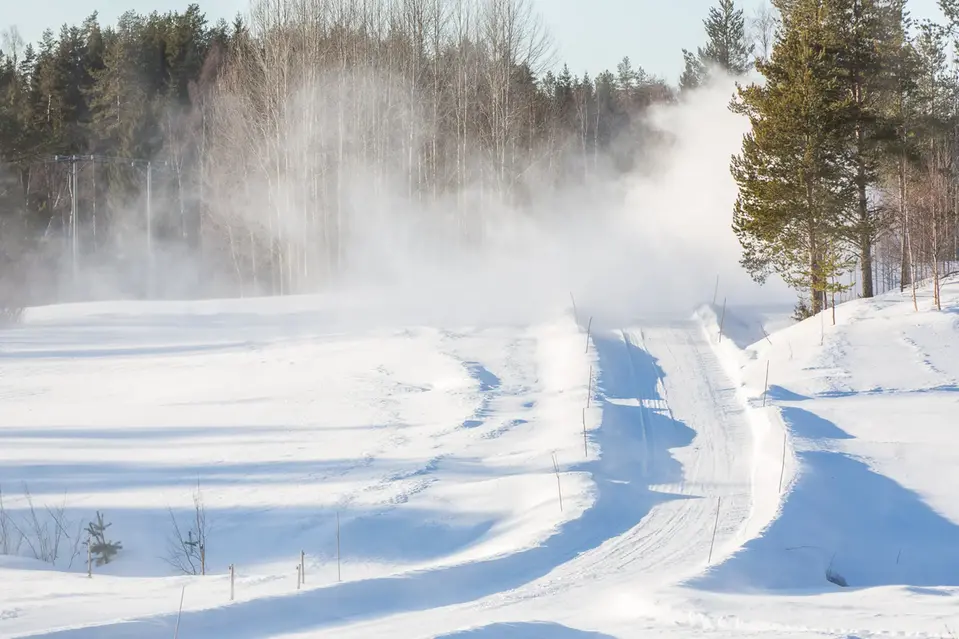
“He knows that our tractor is in the shop, so he helps us clear the road. The community in Holmsvattnet is fantastic. Here we share the same ups and downs, and we can talk about it,” says Sara. Robin chimes in:
“Everyone helps each other one way or another, and then it doesn’t matter if you’re 20 years old or 80. If our paths cross in the village, we stop and say hello. And we borrow tractors, oil and timber from each other. You get a great community as part of the deal when you move to a place like this,” he says.
It takes 25 minutes to drive from Holmsvattnet to central Skellefteå, where both Sara and Robin work. In Sjöbotten they drop the kids off at Sjöstugan Preschool. The family carpools as often as possible, but they need two cars.
“When we moved here, we were aware that there would be some driving involved, and it’s important to plan our weekly shopping and grocery list. Lots of stuff is easier when you live in the city, and we would be happy there too, but our interest in forests and country living would still shape our everyday life. When we lived in the city, we were never home on the weekends. Either we went to our cottage or to my parents’ farm in Västanbyn outside Lövånger.
Sara places a coffee press and a platter of raspberry thumbprint cookies on the kitchen table. Next to it is the couple’s double bed. The kitchen is doubling as a temporary bedroom while the entire second floor is being renovated. Robin and Sara’s daughters Saga and Iris, who have so far shared a room, will now each have their own.
“In the meantime, the whole family gets to sleep in the kitchen. Just like in the olden days,” says Sara.
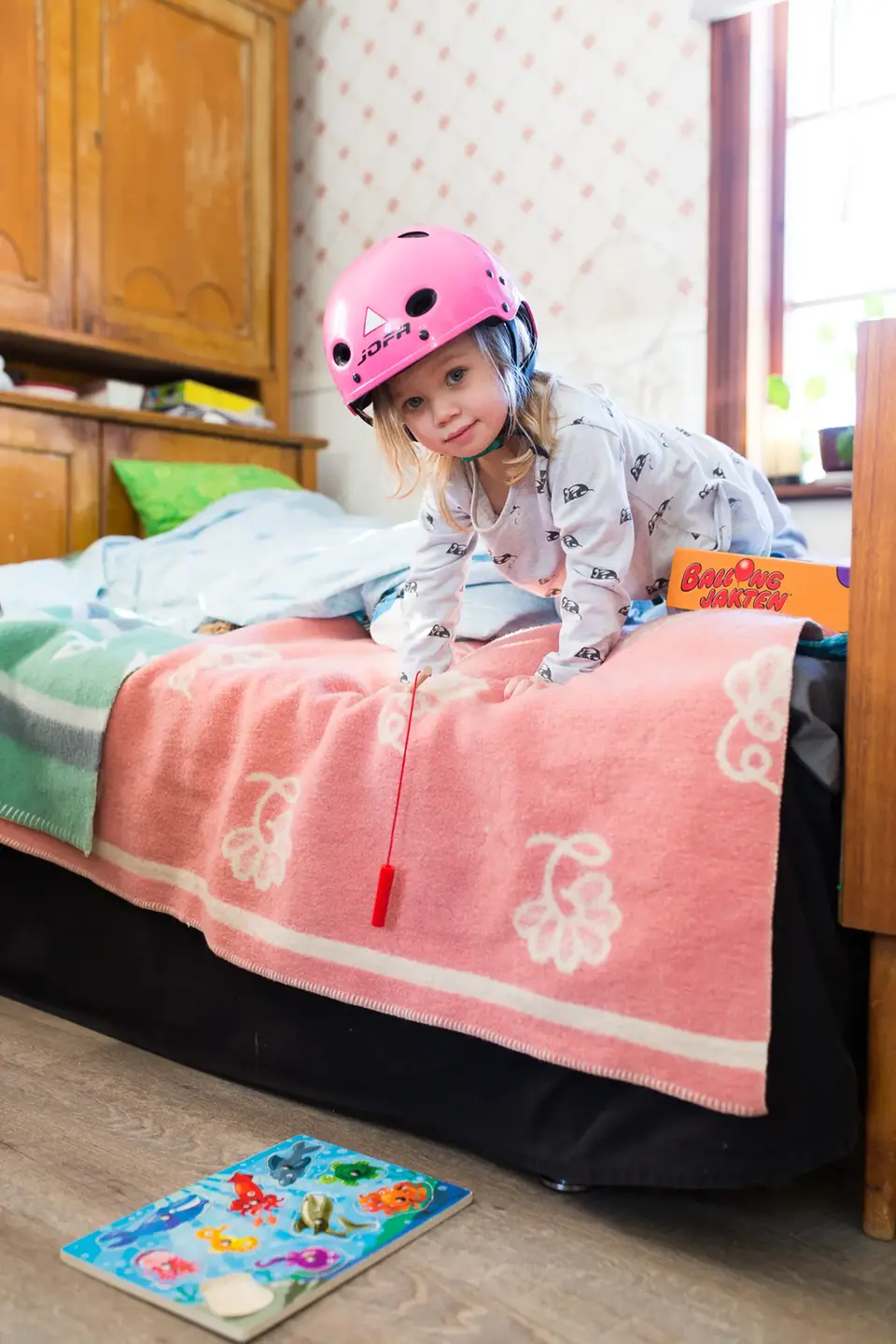
Since they moved to Holmsvattnet, a lot has happened on the farm. Among other things, the couple has had new water pipes installed, built a boiler room and renovated the bathroom and toilet. And in the barn, they are building saddle rooms and changing rooms.
“Installing heating in part of the barn was a huge boost. We live in a small house and need to make the most of our secondary spaces. We’ve discussed expanding the house, but that has plusses and minuses,” says Robin. Sara explains:
“How much space do you really need? In Stockholm, a couple with two kids can live in a two-bedroom apartment because it’s too expensive to buy something bigger, and I know several people who find it difficult to keep up their large houses. We can clean ours in an hour. We’re outdoorsy people, and that’s where our focus is. The house is just where we eat and sleep,” she says.
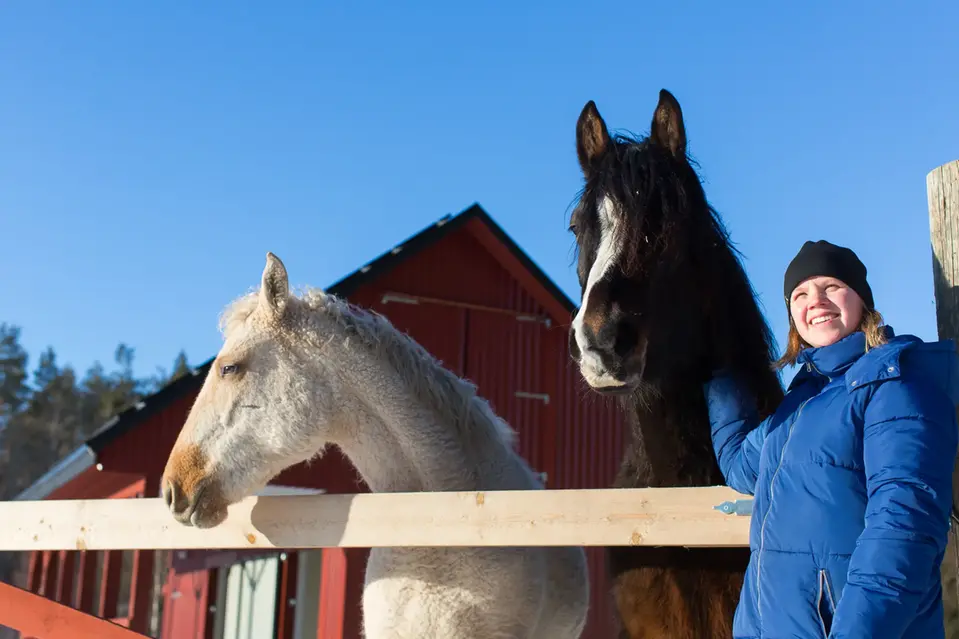
They help their children get into their snowsuits and the family steps out into the crisp February air. In the meadow outside the kitchen window, a thick blanket of snow sparkles in the sunshine. As Sara approaches the newly built loose housing stable, she is greeted by the horses Madonna and Lisa. Sara has a long-term goal to involve them in the farm work.
“For example, they can drag trees home, which we can then burn for heat during the cold winter months. They’re going to contribute somehow, but it’s going to take time. I’m in no rush with that,” she says.
The couple’s sustainable mindset is their guiding light. Sara and Robin have covered the south-facing side of the roof of the loose housing stable with solar cells that generate 6,200 kilowatt hours annually.
“It’s amazing that you can take advantage of something that’s just there,” says Sara.
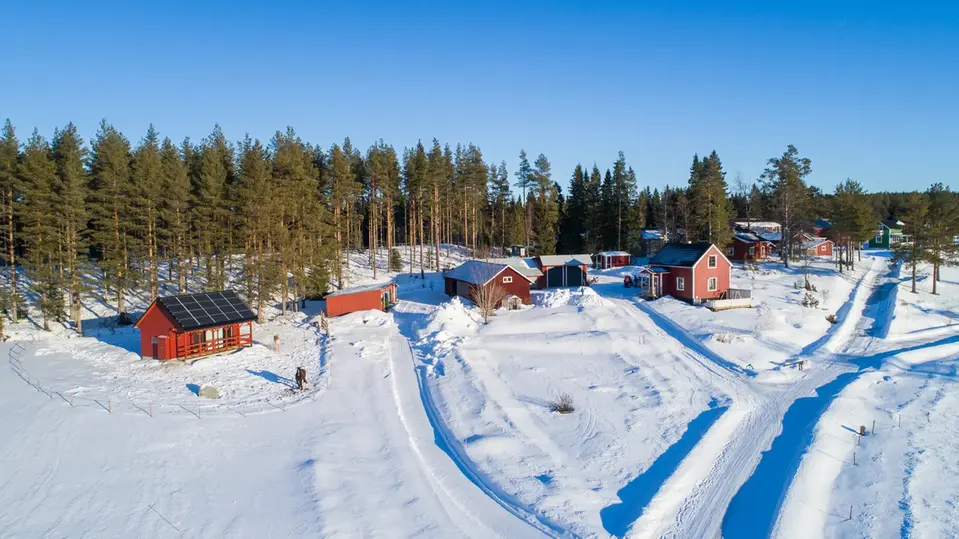
Solar cells are also financially sustainable.
“All the electricity that we don’t consume ourselves goes out into the electrical grid and is sold to someone else. In eight or nine years we’ll have recouped the money we spent on the solar cells, and if they last for 25 years we’ll have at least 15 years of pure profit,” says Robin.
Both he and Sara cut back to working 80 percent when Saga started preschool. Since then, the whole family has taken Wednesdays off.
“Every work week’s a short one, which is really fun. It’s nice to be able to go on a family outing in the middle of the week,” says Sara.
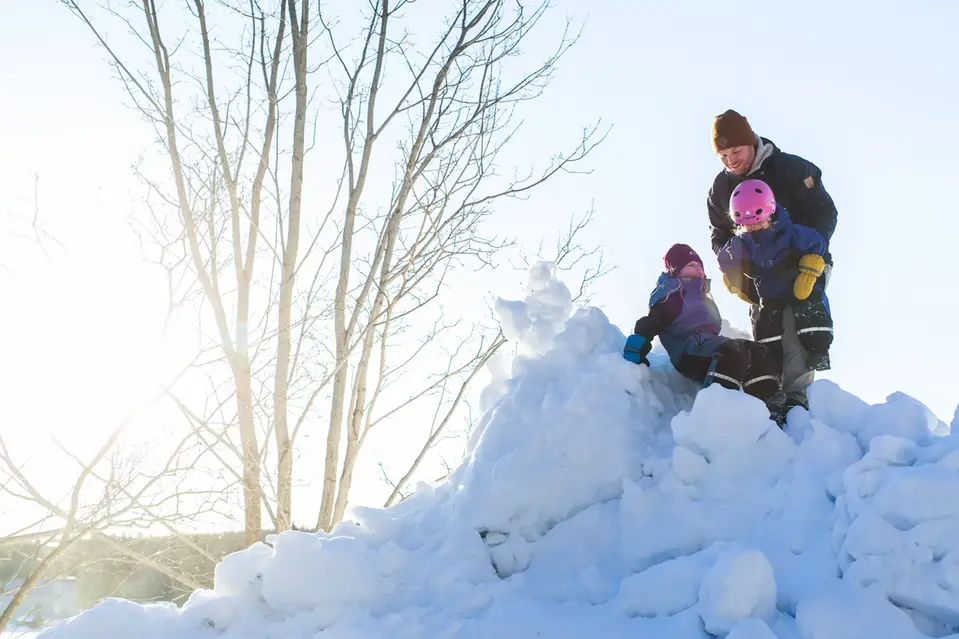
Taking a day off in the middle of the week has inspired others in her workplace to do the same.
“One of them said straight-out that they’d chosen to do what we did. I’ve never had problems with colleagues, employers or supervisors when it comes to taking time off. If the employees are happy, they do a better job, even if they work 80 percent,” says Sara.
On the inside of a kitchen cabinet door is a handwritten list of the couple’s plans for the house and the farm. They have yet to put their long-term plan down on paper, but the general intention is already clear: to prepare the farm for self-sufficiency.
“Here we can get by on growing our own food and keeping our own animals, and that’s something we absolutely want to try out in the future. It would be lovely to be able to consciously choose lower wages and instead have more free time to devote to our forest and land. It would be great to only work three days a week, and we have that opportunity here. If we’d opted to live in a newly built house in the middle of the city, we would probably both have had to work full-time to make ends meet,” says Robin.
“I grew up on a farm where we had animals and I’m grateful for that. Saga and Iris may not always think it’s cool, but I think it’s great that they will get to see first-hand what the Earth can give us and how important the Sun is. That everything is connected,” says Sara.
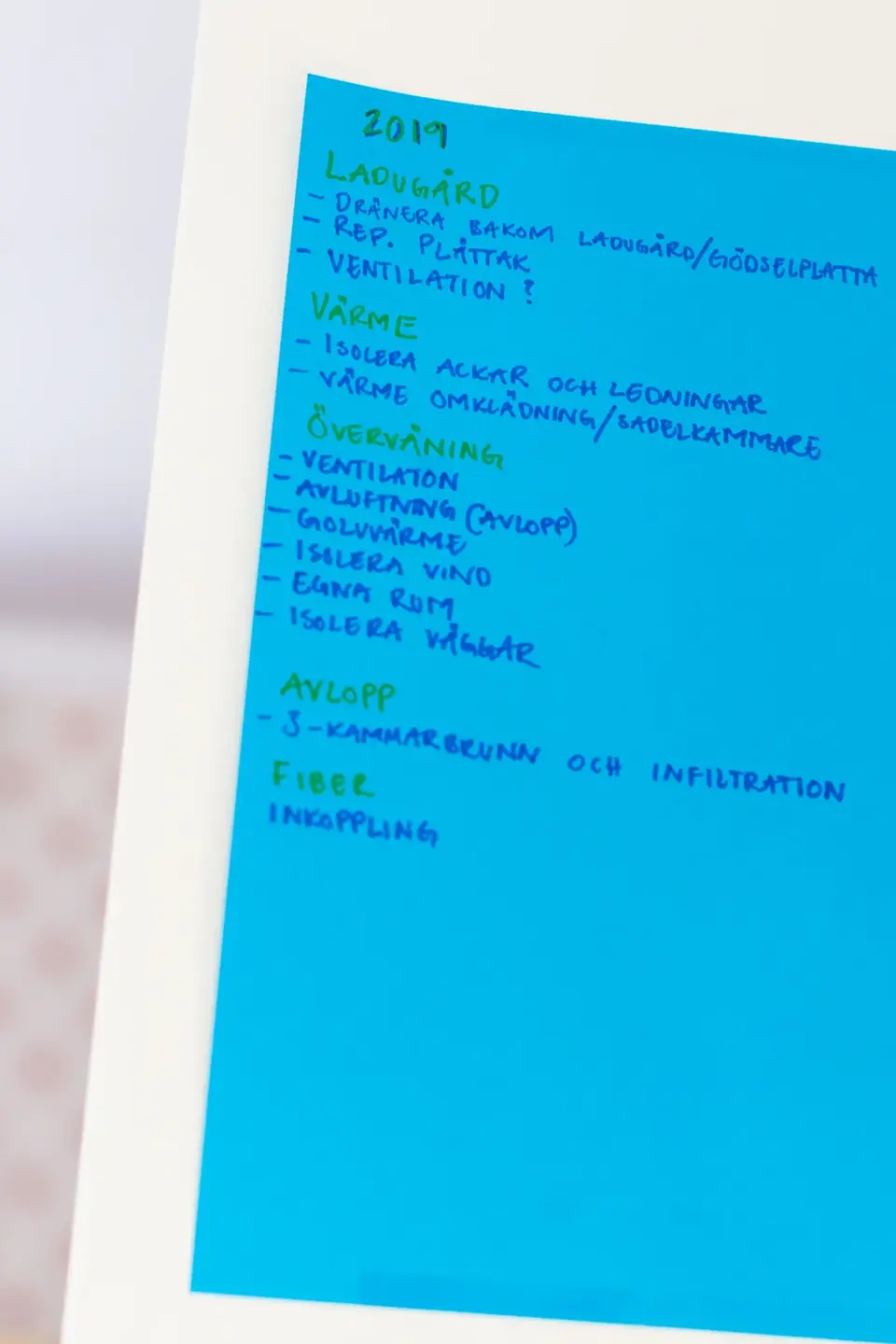
Facts, Sara and Robin Sjöstedt
Family: The kids Saga, 5 years old, and Iris, 3.
Lives: In a farm in the village Holmsvattnet, 30 km south of Skellefteå.
Work: Sara works as a distribution electrician at Energiservice and Robin is a chainman at Skellefteå Kraft.
"I think it’s great that Saga and Iris will get to see first-hand what the Earth can give us and how important the Sun is. That everything is connected,” says Sara"
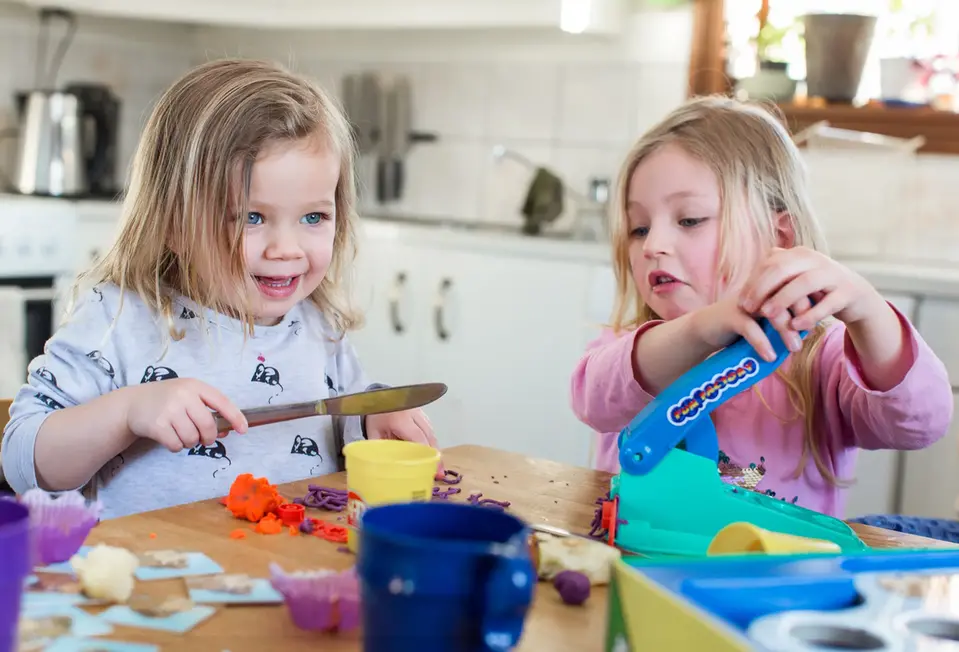
Sidinformation
- Senast uppdaterad:
- 10 October 2022

